
Journal of Physiological Anthropology
Scope & Guideline
Advancing Understanding of Biological Variation in Diverse Environments
Introduction
Aims and Scopes
- Human Adaptation and Variation:
Explores how various populations adapt physiologically to their environments, including studies on genetic adaptations, body composition, and metabolic responses. - Impact of Lifestyle and Environment on Physiology:
Investigates the effects of lifestyle choices, environmental factors, and cultural practices on physiological health, including nutrition, physical activity, and living conditions. - Aging and Health:
Focuses on physiological changes associated with aging, including frailty, sarcopenia, and metabolic syndromes, particularly in diverse populations. - Physiological Responses to Stressors:
Examines how physiological systems respond to various stressors, including environmental extremes (e.g., high altitude, temperature changes) and psychological stress. - Interdisciplinary Approaches:
Encourages the integration of methodologies from anthropology, physiology, genetics, and public health to address complex questions about human health and adaptation.
Trending and Emerging
- Genetic Influences on Physiology:
Research exploring the relationship between genetic polymorphisms and physiological outcomes is on the rise, indicating a trend towards understanding the biological basis of health disparities. - Integration of Mental and Physical Health:
Studies examining the connections between psychological factors (e.g., stress, sleep) and physiological responses are increasingly common, showcasing an interdisciplinary approach to health. - Environmental and Climatic Adaptations:
There is a growing body of work investigating how environmental stressors (such as high altitude and temperature extremes) affect physiological responses, reflecting an interest in adaptation to climate change. - Nutritional Anthropology and Metabolic Health:
Research focusing on the impact of nutrition on metabolic health, including studies on the relationship between dietary patterns and physiological outcomes, is becoming more prominent. - Technological Advances in Physiological Measurement:
The use of innovative methodologies, such as advanced imaging techniques and wearable technology, to assess physiological responses is trending, reflecting the journal's commitment to modern research practices.
Declining or Waning
- Traditional Anthropometric Studies:
Research focusing solely on basic anthropometric measurements (e.g., height, weight) without integrating physiological or environmental contexts appears to be waning, as the field moves towards more complex and interdisciplinary studies. - Single-Factor Health Studies:
Studies that isolate a single factor (such as dietary intake or exercise) without considering the multifactorial nature of health and physiology are becoming less common, as the journal emphasizes holistic approaches. - Historical Physiological Studies:
Investigations into historical physiological trends (e.g., historical height data) are less frequent, possibly due to a shift towards current and applied research that addresses contemporary health issues.
Similar Journals

American Journal of Biological Anthropology
Pioneering Research in Biological AnthropologyThe American Journal of Biological Anthropology, published by WILEY, is a premier journal in the field of biological anthropology, boasting critical insights into human biological diversity, evolution, and adaptation. With its ISSN 2692-7691, this journal has established itself firmly within the research community, achieving a Q1 ranking in key disciplines such as Anatomy, Anthropology, Archeology, and Paleontology as of 2023. This indicates its significant impact, with Scopus rankings placing it in the top tiers across diverse fields, including a stellar rank of 13th out of 113 in Paleontology. Offering open access possibilities, the journal facilitates wider dissemination of groundbreaking research and is committed to advancing knowledge that intersects genetics, epidemiology, and anthropology. Based in the United States, the journal continually fosters an international dialogue among researchers, professionals, and students eager to explore the complexities of human biology through a robust and interdisciplinary lens.
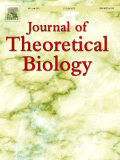
JOURNAL OF THEORETICAL BIOLOGY
Bridging Theory and Application in Biological SciencesJOURNAL OF THEORETICAL BIOLOGY, published by Academic Press Ltd - Elsevier Science Ltd, stands as a pivotal source of scholarly research in the domains of theoretical and applied biological sciences. Since its inception in 1961, this esteemed journal has contributed significantly to the advancement of knowledge across various fields, including agricultural sciences, applied mathematics, biochemistry, genetics, immunology, and medical research. With a commendable Q2 ranking in multiple categories for 2023, it showcases robust impact throughout the academic community, reflected in its high Scopus rankings, which place it in the top 25% of journals in several categories. The journal's commitment to fostering interdisciplinary research supports its objective of bridging theoretical frameworks with practical applications, making it an essential resource for researchers, professionals, and students alike. With its wide-ranging topics and a keen focus on innovation, the JOURNAL OF THEORETICAL BIOLOGY is indispensable for those seeking to explore the complexities of biological systems and their mathematical modeling.

Journal of Comparative Physiology B-Biochemical Systems and Environmental Physiology
Exploring the Interactions of Life and EnvironmentJournal of Comparative Physiology B-Biochemical Systems and Environmental Physiology, published by SPRINGER HEIDELBERG in Germany, stands at the forefront of research in the fields of physiology, biochemistry, and ecological systems. With a commitment to fostering interdisciplinary communication, this journal has been a vital resource since its inception in 1974, converging scientific exploration through the lens of biochemical mechanisms and environmental adaptations in animal systems. Renowned for its rigorous peer-review process, it has achieved impressive rankings, including Q2 in Animal Science and Zoology and Ecology, Evolution, Behavior and Systematics, reflecting its substantial impact within these disciplines. The journal aims to disseminate cutting-edge research that advances our understanding of physiological and biochemical processes while addressing contemporary environmental challenges. While currently operating on a traditional access model, the journal's contributions are crucial for researchers, professionals, and students seeking profound insights into the complex interactions between organisms and their environments.
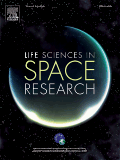
Life Sciences in Space Research
Bridging Life Sciences and Space ExplorationLife Sciences in Space Research, published by ELSEVIER, is a leading journal dedicated to advancing the understanding of life sciences in the context of space exploration and extraterrestrial environments. With a focus on interdisciplinary research, the journal addresses critical topics spanning Agricultural and Biological Sciences, Astronomy and Astrophysics, Ecology, and Health, Toxicology and Mutagenesis. Established in 2014 and set to continue through 2024, it is recognized with a solid impact factor and impressive quartile rankings—including Q2 in several categories, reflecting its influential position among contemporary scientific discourse. The journal welcomes a diverse array of research articles that delve into the implications of space travel on biological systems, innovative ecological practices for sustained extraterrestrial habitation, and critical health-related issues associated with radiation exposure. Researchers, professionals, and students will find Life Sciences in Space Research an invaluable resource for cutting-edge insights and developments in the rapidly evolving field of astrobiology and space science. For more information, please access the journal through its designated platform.

Avian Biology Research
Bridging gaps in knowledge about avian physiology and conservation.Avian Biology Research, published by SAGE PUBLICATIONS LTD, is a leading journal dedicated to advancing the study of avian species through high-quality, peer-reviewed research. With an ISSN of 1758-1559 and an E-ISSN of 1758-1567, this journal has established itself as a vital resource within the fields of Animal Science and Zoology, as well as Ecology, Evolution, Behavior, and Systematics. The journal is currently ranked Q3 in both categories according to the 2023 release of the category quartiles, and it contributes significantly to the global understanding of avian biology, including behavior, physiology, and conservation efforts. Positioned within the competitive landscape of the Scopus rankings, it finds itself amidst a diverse array of research, with medical and environmental implications. As an open-access journal, Avian Biology Research ensures greater accessibility to its contents, fostering disseminative opportunities for researchers, professionals, and students alike. With a publication window spanning from 2008 to 2024, it continues to be an invaluable platform for the dissemination and dialogue of avian research, thereby enlightening future inquiries and driving scientific advancements in this crucial area of biology.
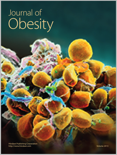
Journal of Obesity
Advancing knowledge in obesity research.The Journal of Obesity, published by HINDAWI LTD, stands at the forefront of research in the field of Endocrinology, Diabetes and Metabolism, providing a vital platform for the dissemination of knowledge and advancements in obesity research. With an impact factor that reflects its significance in the academic community—holding a prestigious Q2 ranking in its category—the journal has continuously evolved since its establishment as an Open Access publication in 2010, promoting unrestricted access to high-quality research. Operating from Egypt, the journal focuses on disseminating impactful studies that address the global epidemic of obesity, making a meaningful contribution to public health solutions. Researchers, professionals, and students in the related fields will find valuable insights and innovative findings within its pages, as the journal endeavors to bridge the gap between scientific research and practical application. As of 2023, it occupies a notable position, ranked #58 out of 244 in Scopus, showcasing its commitment to excellence and relevance in the rapidly evolving landscape of obesity research.
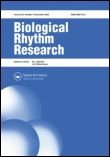
BIOLOGICAL RHYTHM RESEARCH
Illuminating Nature's Clock: Insights into Biological RhythmsBIOLOGICAL RHYTHM RESEARCH is a distinguished journal dedicated to the exploration of biological rhythms, encompassing a spectrum of subjects related to ecology, evolution, and physiology. Published by Taylor & Francis Ltd, this journal serves as an essential platform for researchers and professionals alike to disseminate and engage with cutting-edge findings in the field. With an ISSN of 0929-1016 and an E-ISSN of 1744-4179, it has established a significant academic presence since its inception in 1994, with converged years extending to 2024. As classified in the 2023 category quartiles, it holds a Q3 ranking in Ecology, Evolution, Behavior and Systematics and Q4 in both Physiology and Medical Physiology, indicating its growing influence and the relevance of its research contributions. Although it does not operate under an open access model, the journal remains a vital resource for those pursuing an understanding of circadian rhythms and their implications across disciplines. With robust Scopus ranking placements highlighting its commendable standing within Agricultural and Biological Sciences, Medicine, and Biochemistry, the journal positions itself as an indispensable resource for students, researchers, and educators aiming to deepen their understanding of biological rhythms and their broader ecological significance.
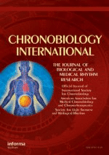
CHRONOBIOLOGY INTERNATIONAL
Connecting Time and Health through Innovative ResearchCHRONOBIOLOGY INTERNATIONAL, a distinguished journal published by Taylor & Francis Inc, is at the forefront of research in the fascinating field of chronobiology, encompassing the physiological aspects of circadian rhythms and their impact on biological processes. Established in 1984, this journal serves as an essential resource for researchers, clinicians, and students, providing groundbreaking insights into how time-related factors influence health and disease. With an impressive ranking in the Q2 quartile for both Physiology and Medical Physiology categories and a commendable positioning within the Scopus metrics, it reflects the high-quality research it publishes. Although not categorized as an open-access journal, CHRONOBIOLOGY INTERNATIONAL provides a vital platform for disseminating innovative studies that bridge gaps in our understanding of physiological rhythms, making it indispensable for those dedicated to advancing knowledge in this dynamic field.

PFLUGERS ARCHIV-EUROPEAN JOURNAL OF PHYSIOLOGY
Unveiling the Complexities of Life Through ResearchPflügers Archiv - European Journal of Physiology, published by Springer Heidelberg, stands at the forefront of physiological research, showcasing groundbreaking studies since its inception in the 1950s. With a distinguished ISSN of 0031-6768 and an E-ISSN of 1432-2013, this esteemed journal maintains a robust reputation, holding Q1 rankings in Clinical Biochemistry, Physiology, and Medical Physiology as of 2023. Its impressive Scopus rankings place it in the top percentile across various categories, including Biochemistry, Genetics and Molecular Biology and Medicine. Pflügers Archiv serves as a vital platform for researchers, professionals, and students, facilitating the dissemination and discussion of advanced physiological concepts and methodologies. Although it does not currently offer open access, its rigorous peer-review process ensures the highest quality publications that contribute significantly to our understanding of physiological science. Explore the depth of physiological research that shapes our academic landscape today.
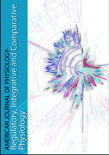
American Journal of Physiology-Regulatory, Integrative and Comparative Physiology
Fostering Interdisciplinary Dialogue in PhysiologyThe American Journal of Physiology-Regulatory, Integrative and Comparative Physiology, published by the American Physiological Society, serves as a premier platform for disseminating cutting-edge research in the fields of physiology, emphasizing regulatory, integrative, and comparative studies that advance our understanding of bodily functions. With an ISSN of 0363-6119 and E-ISSN of 1522-1490, this esteemed journal is recognized for its substantial impact, maintaining a 2023 Q2 ranking in both the physiology and medical physiology categories as well as commendable positions in Scopus rankings. The journal has been pivotal since its inception in 1977 and continues to foster interdisciplinary dialogue among researchers, professionals, and students alike, contributing significantly to the evolving landscape of physiological sciences. Although it operates under a traditional subscription model, its commitment to high-quality, peer-reviewed content ensures that it remains an essential resource for anyone engaged in physiological research and education.